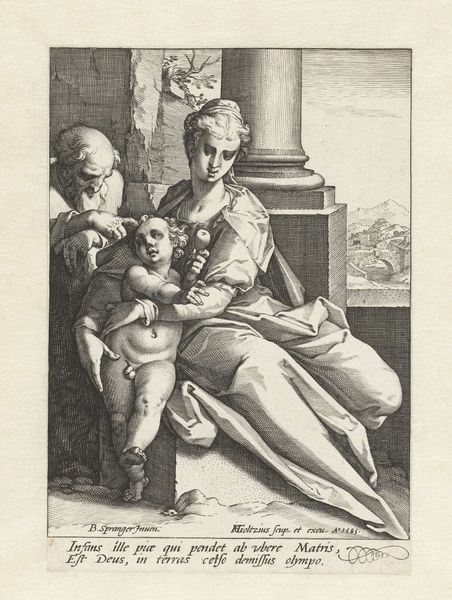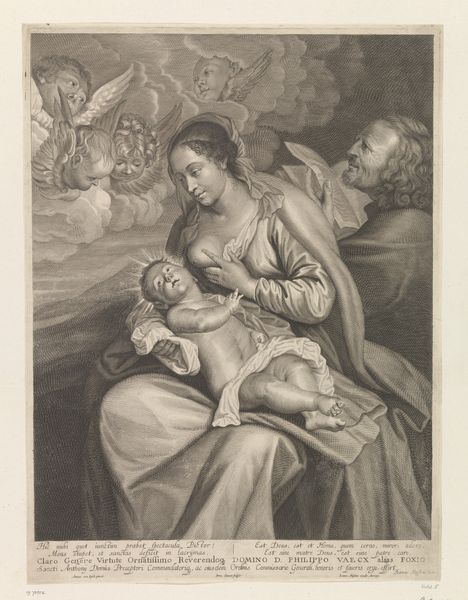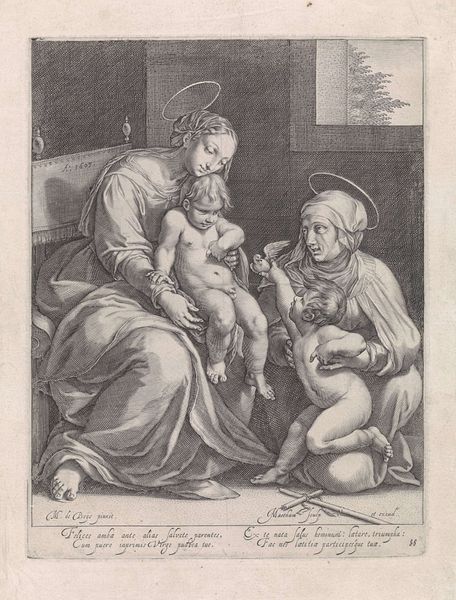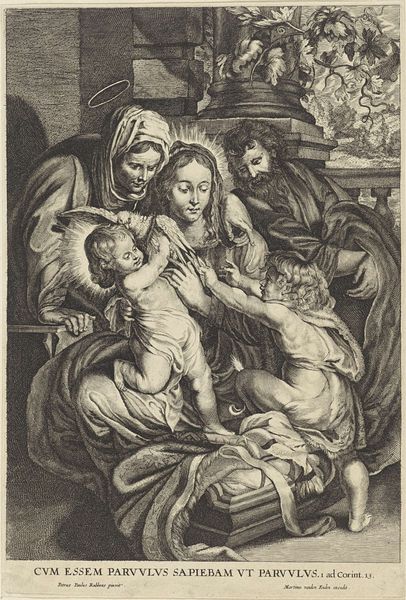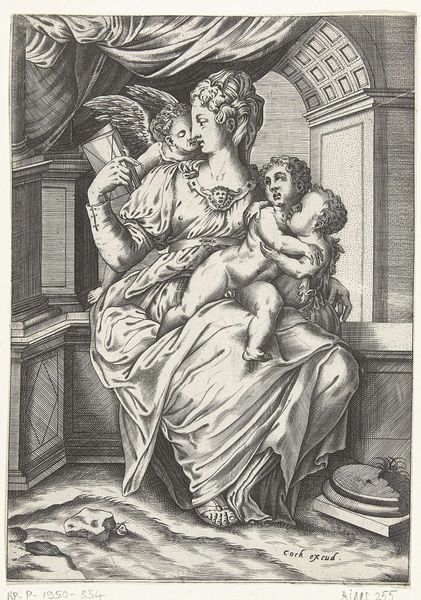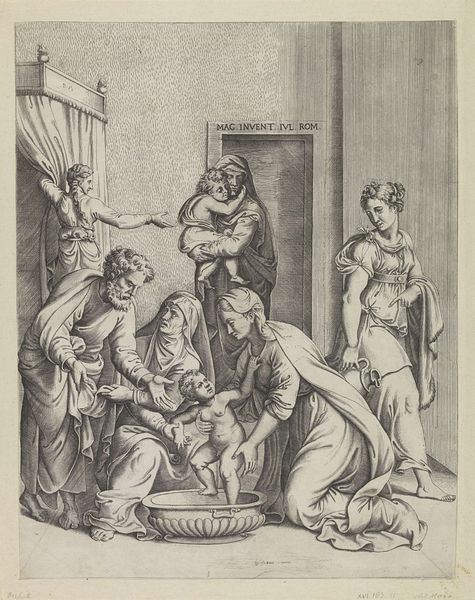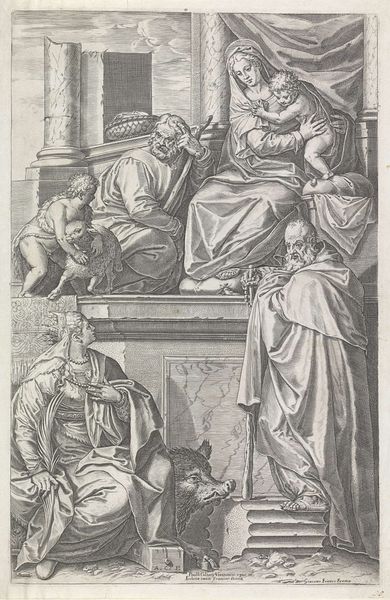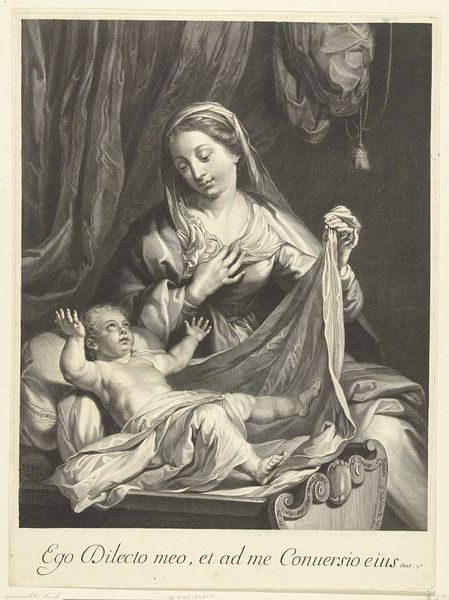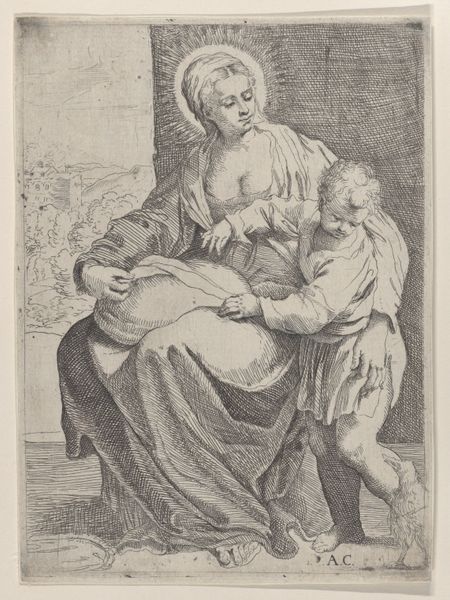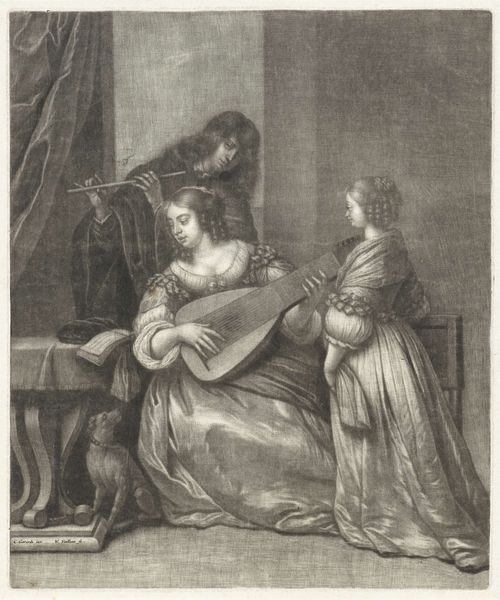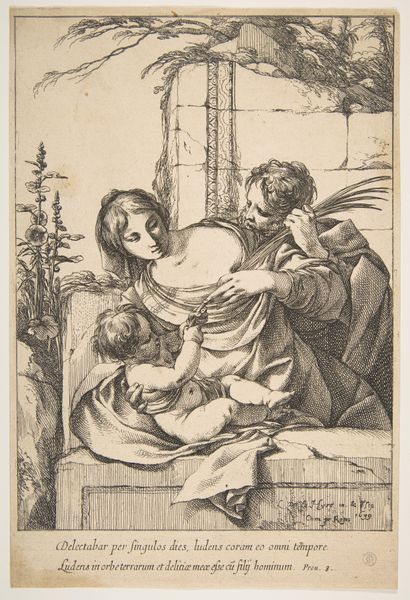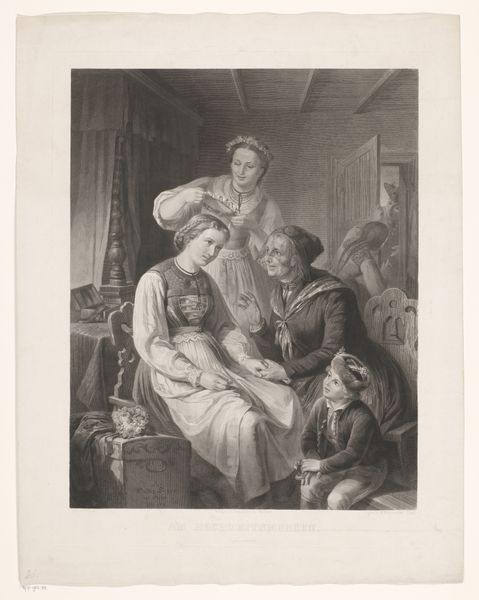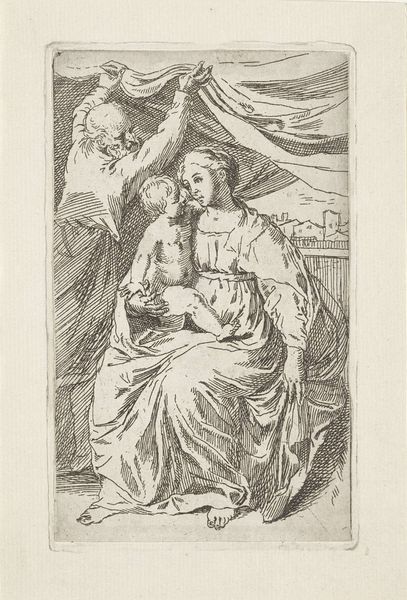
print, engraving
#
allegory
#
baroque
# print
#
old engraving style
#
figuration
#
history-painting
#
engraving
Dimensions: height 387 mm, width 277 mm
Copyright: Rijks Museum: Open Domain
Curator: Before us, we have "Anna te Drieën", or "Saint Anne with Mary and Christ Child". The print, attributed to Paulus Pontius, dates to sometime between 1616 and 1657, and now resides in the Rijksmuseum collection. What do you make of it initially? Editor: Stark contrasts of light and shadow immediately command attention. It feels both intimate and monumental. There’s a gravity to the composition. Curator: That tonal range speaks volumes about Pontius’ skill as an engraver, doesn't it? Considering the material reality, it's just ink on paper, yet it produces a richness that emulates painting. The layering, the textures... the economy of lines speaks to rigorous labor. Note also the Latin inscription— an indication of intended audience. Editor: Indeed. The formal arrangement is fascinating too. Notice the way the figures form a triangular structure, echoing Renaissance compositions yet inflected with Baroque dynamism. The texture of their garments—particularly Mary’s robe—is captured remarkably. But, does the subject matter speak to the intended audience and meaning behind the artwork's theme? Curator: Undoubtedly, given the historical and religious context. It would speak to the concerns of Counter-Reformation society, reaffirming traditional religious roles. The labour implied in raising Christ; note even the basket of linen for swaddling, adding to the tangible domesticity. The artist underscores the value of skilled craftsmanship as analogous to, and in service of, the sacred family. Editor: Interesting, that is not the viewpoint that I originally had. While the engraving technique does speak to labor, focusing on its allegorical dimension deepens appreciation. I do not feel like looking into all of that backstory, what are your final thoughts? Curator: My lasting impression revolves around process and purpose. This work reminds us that art exists within systems—systems of labor, patronage, and religious belief. It's the convergence of these material and social forces that makes this image resonate centuries later. Editor: For me, its the skillful arrangement of form and light that endures. The artist created an echo chamber that allows one to examine composition and style with an admiration that lasts for decades to come.
Comments
No comments
Be the first to comment and join the conversation on the ultimate creative platform.
